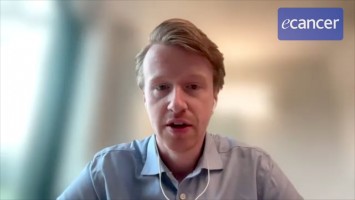ECC 2015
Progression of childhood cancers in Europe
Prof Gilles Vassal - University Paris-Sud, Orsay, France
Now you have a strategic plan for cancer treatment for children and adolescents. What is this all about and why is it necessary?
Absolutely. We launched this plan, strategic plan, in this meeting for the next ten years to address two topics, two objectives: one, cure more patients, increase the probability of cure for patients with poor malignancies and cure better because two-thirds of the patients who survive a childhood cancer do have long-term sequelae.
What are the big issues, though, that you need to address because there is a lot of sophisticated cancer treatment available? What’s going on so far?
Absolutely. We need to address first inequalities because the probability of survival varies plus or minus 10-20% across Europe. We need to address the issue of inequality in access to standard care for all patients in Europe. We need to address the issue of access to innovation because, despite the paediatric medicine regulations, we still have difficulties to get access to the new drugs in a timely fashion for these patients. Third, we need to set up in Europe a programme to follow patients in the long term and provide them the likelihood of having a normal life without sequelae.
There is another side issue, too. Young adults or adolescents can be treated sometimes as adults and sometimes as children. Can you throw any light on that?
Absolutely and they have very specific needs. The disease is not stopping at age eighteen, before and after. So this is why we are considering teenagers and young adults as a population and we are working together with our colleagues in the adult oncology area, we are working together to set up these specific centres and healthcare provision, whatever it is, for patients and to design clinical research for them in a proper way.
Now, there are many different arms to your project, I know, but specifically I’d like to ask you about the drugs, access to drugs and particular agents. What do you have in mind for improving that and which drugs and what sorts of treatments?
You are absolutely right. We have seven objectives and the first one to introduce is innovative therapies in standard care. We are tackling this issue by considering the revolution which is ongoing in adults and we want to be sure that patients have access to this revolution. What it is, it’s generating molecular information from the tumour of patients to understand what is important in the tumour. It is enlarging and increasing the number of new drugs that can be evaluated in children. We have created a platform with industry and the European Medicines Agency and parents, because we work with parents, in order to facilitate this access to new drugs and modify the regulations. So it’s a real momentum at the moment to generate molecular knowledge, to get access to new drugs and to change the environment to facilitate this programme for the next years.
Finally, what’s the basic take-home message for cancer doctors right now?
Cancer doctors? Cancer is a rare disease in children, 80% of them can be cured but two-thirds will have long-term sequelae. But 6,000 patients each year, young people, die of cancer in Europe and the key message is that cancer in children is not solved. It is still a public health issue, it is still the first cause of death by disease over one year of age. This is why this plan with the parents, because we establish the plan with the parents, is meant to really tackle the issue, cure more, cure better and tackle the inequalities.








